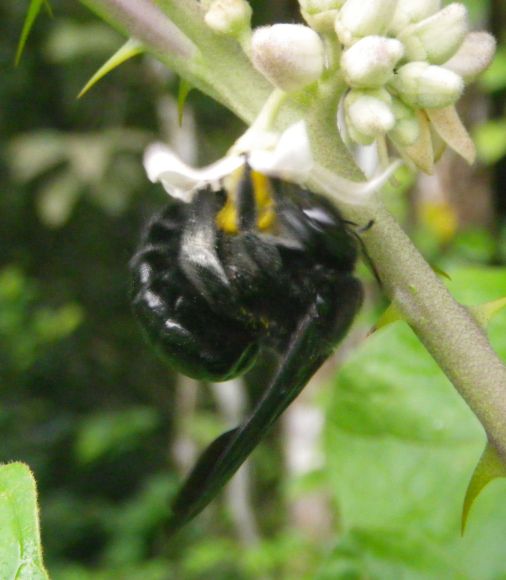Comparative bioacoustical studies on flight and buzzing of neotropical bees
DOI:
https://doi.org/10.26786/1920-7603(2011)17Abstract
The presence of bees is typically accompanied by the humming sound of their flight. Bees of several tribes are also capable of pollen collecting by vibration, known as buzzing behaviour, which produces a buzzing sound, different from the flight sound. An open question is whether bee species have species-specific buzzing patterns or frequencies dependent of the bees' morphology or are capable to adjust their indivudual buzzing sound to optimize pollen return. The investigations to approach this issue were performed in northeastern Brazil near Recife in the state of Pernambuco. We present a new field method using a commercially available portable system able to record the sound of bees during flight and buzzing at flowers. Further, we describe computer linguistical algorithms to analyse the frequency of the recorded sound sequences. With this method, we recorded the flight and buzzing sequences of 59 individual bees out of 12 species visiting the flowers of Solanum stramoniifolium and S. paniculatum. Our findings demonstrate a typical frequency range for the sounds produced by the bees of a species. Our statistical analysis shows a strong correlation of bee size and flight frequency and demonstrate that bee species use different frequency patterns.

Published
How to Cite
Issue
Section
License
Copyright (c) 2012 Andreas Burkart, Klaus Lunau, Clemens Schlindwein

This work is licensed under a Creative Commons Attribution 4.0 International License.
JPE is an open access journal which means that all content is freely available without charge to the user or his/her institution.
Authors who publish with this journal agree to the following terms:
1) Authors retain copyright and grant the journal right of first publication with the work simultaneously licensed under a Creative Commons Attribution License that allows others to share the work with an acknowledgement of the work's authorship and initial publication in this journal.
2) Authors are able to enter into separate, additional contractual arrangements for the non-exclusive distribution of the journal's published version of the work (e.g., post it to an institutional repository or publish it in a book), with an acknowledgement of its initial publication in this journal.
3) Authors are permitted and encouraged to post their work online (e.g., in institutional repositories or on their website) prior to and during the submission process, as it can lead to productive exchanges, as well as earlier and greater citation of published work (See The Effect of Open Access).
To assure a broader targeted audience, content will be included into databases (such as EBSCO) and directories (such as DOAJ).











